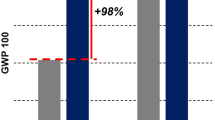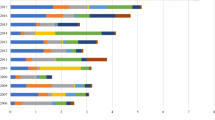Abstract
At least once a year, when the new levy for the support of renewable energy sources for electricity production (RES-E) is announced, the German public critically discusses the energy transition. Arguments against RES-E vary greatly, including that they are too expensive, contribute little or not at all to reducing CO2 emissions, present risks to the security of supply and require large grid investment. Whatever the criticism, it at least raises the interesting question of how the German energy system would look like without RES-E. To answer that question a counterfactual Germany power generation portfolio without RES-E is developed. The effects of German RES-E on the European power market are then derived from scenario analysis.
The presented analysis is based on a counterfactual approach using the electricity market model ELTRAMOD, which is based on a cost minimization approach with a time resolution of 8760 h. The modeling problem is split into two models reducing the complexity of the modeled problem: ELTRAMOD-INVEST and ELTRAMOD-DISPATCH. At first, ELTRAMOD-INVEST is used to calculate the counterfactual power plant investments in Germany. Afterwards, the European power plant dispatch is determined with ELTRAMOD-DISPATCH. As RES-E emit no carbon emissions, the carbon price is modeled endogenously to see how German RES-E influence carbon prices and what the effects are.
In the counterfactual scenario, where no German RES-E are installed, the conventional capacity increases up to 8 GW (about 8% of the overall conventional capacity) compared to reality in 2016. That indicates that RES-E prevented investments in conventional capacities. Furthermore power prices in the counterfactual scenario increase up to 18 €/MWh compared to real power prices, which equals the long-term merit order effect. It is composed of three parts: a changed power plant dispatch, higher CO2 prices and additional conventional capacity. The changed power plant dispatch and higher CO2 prices increase the power prices up to 12 €/MWh, in contrast the additional conventional capacity decreases the power price up to 3.5 €/MWh.
Zusammenfassung
Mindestens einmal im Jahr, wenn die neue EEG-Umlage angekündigt wird, diskutiert die deutsche Öffentlichkeit kritisch über die Energiewende. Die Argumente gegen Erneuerbare Energien (EE) sind sehr vielfältig, z. B. sind sie zu teuer, leisten nur einen kleinen oder gar keinen Beitrag zur Reduzierung der CO2-Emissionen, gefährden die Versorgungssicherheit und verursachen hohe Netzinvestitionen. Wie auch immer die Kritik bewertet wird, wirft sie zumindest die spannende Frage auf, wie das deutsche Energiesystem ohne EE aussehen würde. Um diese Frage zu beantworten, wird ein hypothetischer deutscher Kraftwerkspark ohne EE entwickelt. Aus einer Szenarioanalyse werden dann die Auswirkungen der deutschen EE auf den europäischen Strommarkt abgeleitet.
Die vorliegende Analyse basiert auf einem kontrafaktischen Ansatz der im Strommarktmodell ELTRAMOD umgesetzt wird. ELTRAMOD hat einen Kostenminimierungsansatz mit einer Zeitauflösung von 8760 h. Zur Reduktion der Komplexität wird das Modellierungsproblem auf zwei Modelle verteilt: ELTRAMOD-INVEST und ELTRAMOD-DISPATCH. Zunächst werden mit ELTRAMOD-INVEST die kontrafaktischen Kraftwerksinvestitionen in Deutschland berechnet. Anschließend wird der europäische Kraftwerkseinsatz mit ELTRAMOD-DISPATCH ermittelt. Da deutsche EEs kein Kohlendioxid emittieren, wird der CO2-Preis endogen modelliert, um zu ermitteln, wie die deutschen EEs die CO2-Preise beeinflussen.
Im kontrafaktischen Szenario, in dem keine deutschen EE installiert sind, steigt die konventionelle Kapazität im Vergleich zur Realität im Jahr 2016 um bis zu 8 GW (rund 8 % der gesamten konventionellen Kapazität). Das zeigt, dass EE Investitionen in konventionelle Kapazitäten verhindert haben. Darüber hinaus steigen die Strompreise im kontrafaktischen Szenario im Vergleich zu den realen Strompreisen um bis zu 18 €/MWh, was dem langfristigen Merit-Order-Effekt entspricht. Er besteht aus drei Teilen: einem geänderten Kraftwerkseinsatz, höheren CO2-Preisen und zusätzlichen konventionellen Kapazitäten. Der geänderte Kraftwerkseinsatz und höhere CO2-Preise erhöhen die Strompreise um bis zu 12 €/MWh, während die zusätzliche konventionelle Kapazität den Strompreis um bis zu 3,5 €/MWh reduziert.









Similar content being viewed by others
Notes
Run-of-river power plants could also be replaced by the technology mix of 2006, which would lead to an increase of lignite and nuclear capacity, which is unlikely due to the anti-nuclear movement and strong regulation.
The assumption is based on Markewitz et al. (2018), who showed that the lifetime of power plants increased over recent decades. However, power plants with a lifetime of less than 30 years have the largest capacity of decommissioned power plants, so power plants that have reached their technical lifetimes are likely to be among them. Since the focus is on economic decommissioning, a security margin of 5 years is assumed, leading to threshold of 25 years.
References
Babrowski S et al (2013) Reducing computing time of energy system models by a myopic approach. Energy Syst 5(1):65–83. https://doi.org/10.1007/s12667-013-0085-1
BMU (2007) Leitstudie 2007: „Ausbaustrategie Erneuerbare Energien“ – Aktualisierung und Neubewertung bis zu den Jahren 2020 und 2030 mit Ausblick bis 2050. http://elib.dlr.de/56730/1/Nitsch_Leitstudie_2007.pdf. Accessed 29 Apr 2018
BMU (2010) Langfristszenarien und Strategien für den Ausbau der erneuerbaren Energien in Deutschland bei Berücksichtigung der Entwicklung in Europa und global – “Leitstudie 2010”. http://www.dlr.de/dlr/Portaldata/1/Resources/documents/leitstudie2010.pdf. Accessed 29 Apr 2018
BMU (2012) Langfristszenarien und Strategien für den Ausbau der erneuerbaren Energien in Deutschland bei Berücksichtigung der Entwicklung in Europa und global Schlussbericht BMU-FKZ 03MAP146. http://www.dlr.de/dlr/Portaldata/1/Resources/bilder/portal/portal_2012_1/leitstudie2011_bf.pdf. Accessed 29 Apr 2018
BMWi (2015) Die Energie der Zukunft Vierter Monitoring-Bericht zur Energiewende. https://www.bmwi.de/Redaktion/DE/Publikationen/Energie/vierter-monitoring-bericht-energie-der-zukunft.pdf?__blob=publicationFile&v=26
BMWi (2017a) EEG in Zahlen: Vergütungen, Differenzkosten und EEG-Umlage 2000 bis 2018. https://www.erneuerbare-energien.de/EE/Redaktion/DE/Downloads/eeg-in-zahlen-pdf.pdf%3F__blob%3DpublicationFile
BMWi (2017b) Erneuerbare Energien in Zahlen. https://www.bmwi.de/Redaktion/DE/Publikationen/Energie/erneuerbare-energien-in-zahlen-2016.pdf?__blob=publicationFile&v=8. Accessed 2 May 2018
BNetzA (2012) Bericht zum Zustand der leitungsgebundenen. https://www.bundesnetzagentur.de/SharedDocs/Downloads/DE/Allgemeines/Bundesnetzagentur/Publikationen/Berichte/2012/NetzBericht_ZustandWinter11_12pdf.pdf?__blob=publicationFile&v=2. Accessed 2 May 2018
BNetzA (2014a) Kraftwerksliste. https://www.bundesnetzagentur.de/SharedDocs/Downloads/DE/Sachgebiete/Energie/Unternehmen_Institutionen/Versorgungssicherheit/Erzeugungskapazitaeten/Kraftwerksliste/Kraftwerksliste_2014.xlsx?__blob=publicationFile&v=17
BNetzA (2014b) Monitoringbericht 2014. https://www.bundesnetzagentur.de/SharedDocs/Downloads/DE/Allgemeines/Bundesnetzagentur/Publikationen/Berichte/2014/Monitoringbericht_2014_BF.pdf;jsessionid=480C0948B6B54E8A2868766D183DB8D8?__blob=publicationFile&v=4
BNetzA (2015) Monitoringbericht 2015. https://www.bundesnetzagentur.de/SharedDocs/Downloads/DE/Allgemeines/Bundesnetzagentur/Publikationen/Berichte/2015/Monitoringbericht_2015_BA.pdf;jsessionid=480C0948B6B54E8A2868766D183DB8D8?__blob=publicationFile&v=4
BNetzA (2016) Monitoringbericht 2016. https://www.bundesnetzagentur.de/SharedDocs/Downloads/DE/Sachgebiete/Energie/Unternehmen_Institutionen/DatenaustauschUndMonitoring/Monitoring/Monitoringbericht2016.pdf;jsessionid=480C0948B6B54E8A2868766D183DB8D8?__blob=publicationFile&v=2
BNetzA (2017) Monitoringbericht 2017. https://www.bundesnetzagentur.de/SharedDocs/Downloads/DE/Allgemeines/Bundesnetzagentur/Publikationen/Berichte/2017/Monitoringbericht_2017.pdf;jsessionid=480C0948B6B54E8A2868766D183DB8D8?__blob=publicationFile&v=4
Bublitz A, Keles D, Fichtner W (2017) An analysis of the decline of electricity spot prices in Europe: Who is to blame? Energy Policy 107:323–336. https://doi.org/10.1016/j.enpol.2017.04.034
Cludius J et al (2014) The merit order effect of wind and photovoltaic electricity generation in Germany 2008–2016 estimation and distributional implications. Energy Econ 44:302–313. https://doi.org/10.1016/j.eneco.2014.04.020
Clulow V (2005) Futures dilemmas for marketers: can stakeholder analysis add value? Eur J Mark 39(9/10):978–997. https://doi.org/10.1108/03090560510610671
Demandt A (2005) Ungeschriebene Geschichte Ein Traktat über die Frage: Was wäre geschehen, wenn ...? 4th edn. Vandenhoeck & Ruprecht, Göttingen
Diekmann J et al (2007) Abgestimmtes Thesenpapier. https://www.bmu.de/fileadmin/bmu-import/files/pdfs/allgemein/application/pdf/thesenpapier_meritordereffekt.pdf
ENTSO-E (2014) Statistical Factsheet 2013. https://docstore.entsoe.eu/Documents/Publications/ENTSO-E_general_publications/2013_ENTSO-E_Statistical_Factsheet_Updated_19_May_2014_.pdf
ENTSO-E (2015) Statistical Factsheet 2014. https://docstore.entsoe.eu/Documents/Publications/Statistics/Factsheet/entsoe_sfs2014_web.pdf
ENTSO-E (2016) STATISTICAL FACTSHEET 2015. https://docstore.entsoe.eu/Documents/Publications/Statistics/Factsheet/entsoe_sfs2015_web.pdf
ENTSO-E (2017) STATISTICAL FACTSHEET 2016. https://docstore.entsoe.eu/Documents/Publications/Statistics/Factsheet/entsoe_sfs_2016_web.pdf
Epstude K, Roese NJ (2008) The functional theory of counterfactual thinking. Pers Soc Psychol Rev 12(2):168–192. https://doi.org/10.1177/1088868308316091
Everts M, Huber C, Blume-Werry E (2016) Politics vs markets: how German power prices hit the floor. J World Energy Law Bus 9(2):116–123. https://doi.org/10.1093/jwelb/jww005
Ferraro PJ (2009) Counterfactual thinking and impact evaluation in environmental policy. New Dir Eval(122):75–84. https://doi.org/10.1002/ev.297
Ford A (1997) System dynamics and the electric power industry. Syst Dyn Rev 13(1):57–85. https://doi.org/10.1002/(sici)1099-1727(199721)13:1%3C57::aid-sdr117%3E3.3.co;2-2
Fürsch M, Malischek R, Lindenberger D (2012) Der Merit-Order-Effekt der erneuerbaren Energien. https://econpapers.repec.org/paper/risewikln/2012_5f014.htm. Accessed 16 Oct 2018
Geels FW (2013) The impact of the financial-economic crisis on sustainability transitions: Financial investment, governance and public discourse. Environ Innov Soc Transit 6:67–95. https://doi.org/10.1016/J.EIST.2012.11.004
Gelabert L, Labandeira X, Linares P (2011) An ex-post analysis of the effect of renewables and cogeneration on Spanish electricity prices. Energy Econ 33(SUPPL. 1):S59–S65. https://doi.org/10.1016/j.eneco.2011.07.027
Green R, Vasilakos N (2011) The long-term impact of wind power on electricity prices and generating capacity. Department of Economics, Birmingham https://doi.org/10.1016/j.renene.2016.03.053 (Discussion Paper)
Haszeldine RS (2009) Carbon capture and storage: how green can black be? Science 325(5948):1647–1652. https://doi.org/10.1126/science.1172246
He J et al (2013) A counterfactual scenario simulation approach for assessing the impact of farmland preservation policies on urban sprawl and food security in a major grain-producing area of China. Appl Geogr 37(1):127–138. https://doi.org/10.1016/j.apgeog.2012.11.005
Hillemacher L, Fichtner W (2012) Analyse des Einflusses des Emissionshandels auf Produktion und Emissionen ausgewählter Industriesektoren. 12. Symposium Energieinnovation, Graz, pp 1–12
Hirth L (2018) What caused the drop in European electricity prices? A factor decomposition analysis. Energy J 39(1). https://doi.org/10.5547/01956574.39.1.lhir
Hobbie H, Schmidt M, Möst D (2019) Windfall profits in the power sector during phase III of the EU ETS: Interplay and effects of renewables and carbon prices. J Clean Prod. (under Review)
Joffe J (2013) Der Wahnsinn, der aus der Steckdose fließt. https://www.zeit.de/wirtschaft/2013-10/erneuerbare-umlage-kritik
Kallabis T, Pape C, Weber C (2016) The plunge in German electricity futures prices—Analysis using a parsimonious fundamental model. Energy Policy 95:280–290. https://doi.org/10.1016/J.ENPOL.2016.04.025
Klobasa M, Sensfuß F (2011) CO 2-Minderung im Stromsektor durch den Einsatz erneuerbarer Energien im Jahr 2008 und 2009. https://www.isi.fraunhofer.de/content/dam/isi/dokumente/ccx/2011/Abschlussbericht_Gutachten-CO2-ISI_2008-2009.pdf
Klobasa M, Sensfuß F (2013) CO 2-Minderung im Stromsektor durch den Einsatz erneuerbarer Energien im Jahr 2010 und 2011. https://www.isi.fraunhofer.de/content/dam/isi/dokumente/ccx/2013/Abschlussbericht_Gutachten-CO2-ISI_2010-2011.pdf
Klobasa M, Sensfuß F (2016) CO2-Minderung im Stromsektor durch den Einsatz erneuerbarer Energien in den Jahren 2012 und 2013. https://www.umweltbundesamt.de/sites/default/files/medien/378/publikationen/climate_change_11_2016_co2_minderung_im_stromsektor_durch_den_einsatz_erneuerbarer_energien_0.pdf
Kumar S, Möst D (2017) Cross border commercial flow of electricity for Germany: What does market data tell us? 14th International Conference on the European Energy Market (EEM), 2017, pp 1–6 https://doi.org/10.1109/EEM.2017.7981990
Lankosko J, Ollikainen M (2013) Counterfactual approach for assessing agri-environmental policy: The case of the Finnish water protection policy. Rev Etud Agric Environ 94(2):165–193. https://doi.org/10.4074/S1966960713012022
Markewitz P, Robinius M, Stolten D (2018) The future of fossil fired power plants in Germany—A lifetime analysis. Energies 11(6):1616. https://doi.org/10.3390/en11061616
Nicolosi M (2011) The economics of renewable electricity market integration. http://kups.ub.uni-koeln.de/4612/
Praktiknjo A, Erdmann G (2016) Renewable electricity and backup capacities: An (un-) resolvable problem? Energy J 37(Special Issue 2):89–106. https://doi.org/10.5547/01956574.37.SI2.apra
Schemm R (2011) Modell zur Untersuchung von Investitionsentscheidungen unter Unsicherheit in Stromerzeugungstechnologien. https://d-nb.info/1013827775/34. Accessed 2 May 2018
Schmidbauer J (2016) Noch nie mussten die Verbraucher so viel für die Energiewende zahlen. https://www.sueddeutsche.de/wirtschaft/eeg-oekostrom-umlage-steigt-auf-rekordwert-von-cent-1.3205215
Seifert JM (2009) Preismodellierung und Derivatebewertung im Strommarkt – Theorie und Empirie. https://d-nb.info/1003157521/34. Accessed 2 May 2018
Sensfuß F (2011) Analysen zum Merit-Order Effekt erneuerbarer Energien. https://www.solarwirtschaft.de/fileadmin/content_files/Studie_Meritorder.pdf. Accessed 29 Apr 2018
Weigt H (2009) Germany’s wind energy: The potential for fossil capacity replacement and cost saving. Appl Energy 86(10):1857–1863. https://doi.org/10.1016/J.APENERGY.2008.11.031
Weingartner M, Schäfers M (2015) Die Kritik an Ökostrom-Umlage wird lauter. https://www.faz.net/aktuell/wirtschaft/energiepolitik/gabriel-muss-sich-fuer-teure-energiewende-und-steigende-eeg-umlage-verantworten-13858459.html
Wetzel D (2017) Handwerk fordert das Aus der ‚ungerechten‘ Energiewende. https://www.welt.de/wirtschaft/article166698465/Handwerk-fordert-das-Aus-der-ungerechten-Energiewende.html
Wissen R, Nicolosi M (2007) Anmerkungen zur aktuellen Diskussion zum Merit-Order Effekt der erneuerbaren Energien. https://core.ac.uk/download/pdf/6318641.pdf. Accessed 12 Apr 2018
Würzburg K, Labandeira X, Linares P (2013) Renewable generation and electricity prices: Taking stock and new evidence for Germany and Austria. Energy Econ 40(40):159–171. https://doi.org/10.1016/j.eneco.2013.09.011
Acknowledgements
The author would like to thank Constantin Dierstein, Robert Kunze and Dominik Möst for their helpful comments. Preliminary stages of this research were presented at GOR. The valuable comments and input are highly appreciated. This work was supported by the German Environmental Agency under the research project SeEIS (FKZ 37EV 16 126 0).
Author information
Authors and Affiliations
Corresponding author
Additional information
This paper examines the impact of German RES-E on the electricity market. The core element of this paper is the development of a counterfactual power plant generation portfolio for Germany without RES-E. On this basis, the effects of the German RES-E on the European electricity market are determined.
Rights and permissions
About this article
Cite this article
Anke, CP. How Renewable Energy Is Changing the German Energy System—a Counterfactual Approach. Z Energiewirtsch 43, 85–100 (2019). https://doi.org/10.1007/s12398-019-00253-w
Published:
Issue Date:
DOI: https://doi.org/10.1007/s12398-019-00253-w
Keywords
- Renewable energy
- Merit order effect
- Energy system analysis
- Carbon prices
- Counterfactual analysis
- German power system




